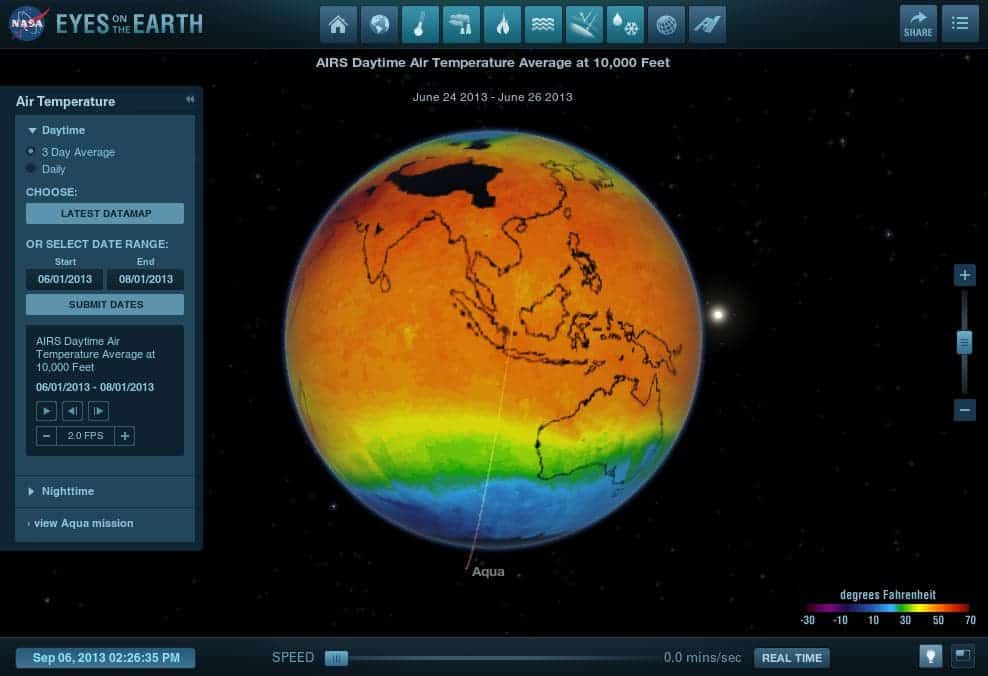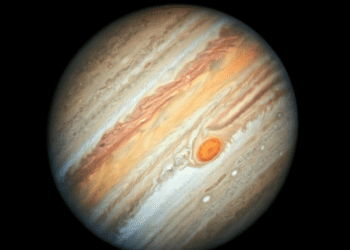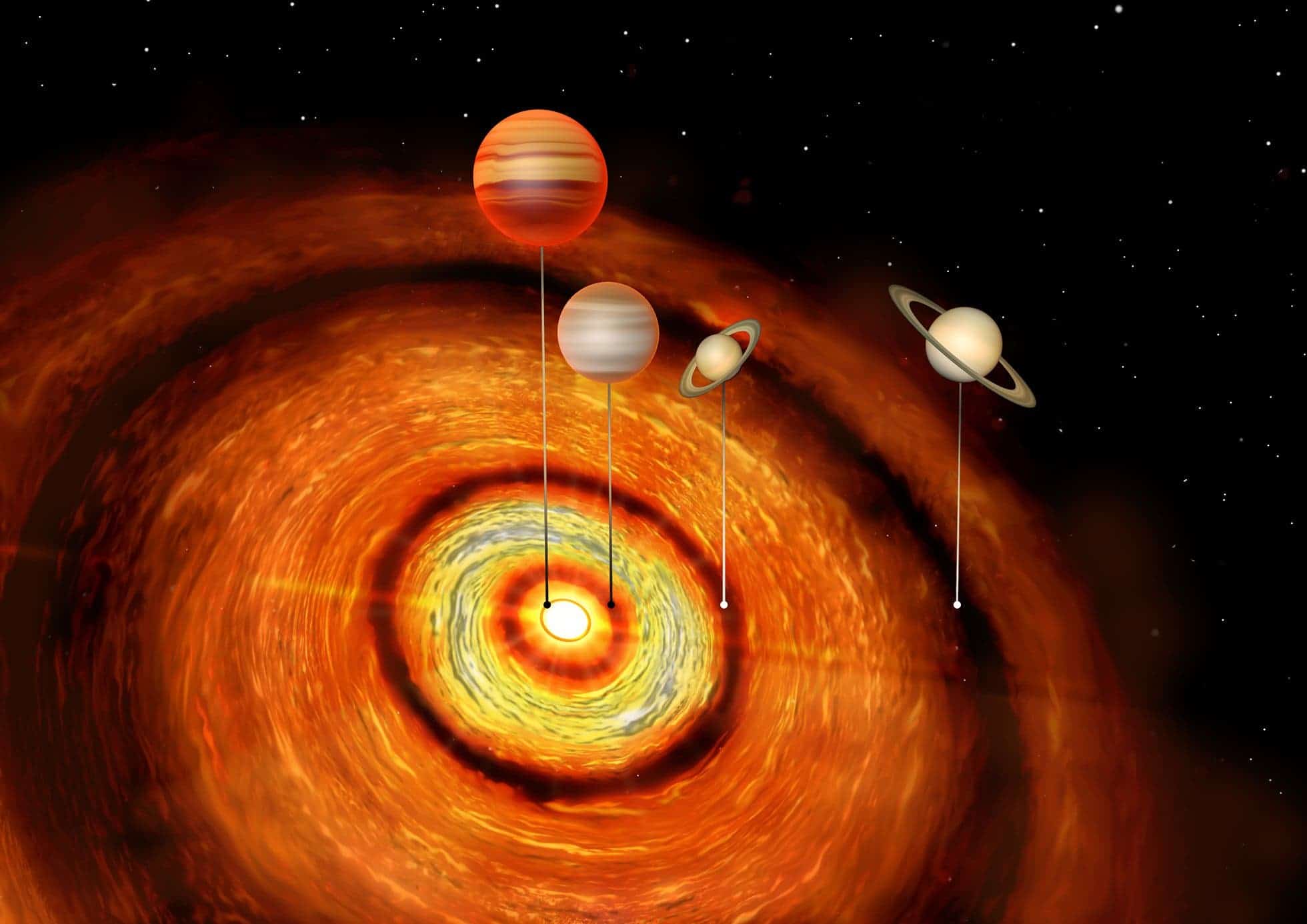Astronomers have created the first cloud map of a planet outside our solar system, a sizzling, Jupiter-like world known as Kepler-7b.

NASA’s Kepler and Spitzer space telescopes found patchy clouds on this hot Jupiter which was discovered in January 2010. Hot Jupiters are some of the most common planets from what we know so far; they are gas giants just like Jupiter, but they have high surface temperatures because they orbit very close to the Sun (tipically 2 – 7 times closer than the Earth), which makes them very bright and relatively easy to study.
Kepler-7b is marked by high clouds in the west and clear skies in the east.
“By observing this planet with Spitzer and Kepler for more than three years, we were able to produce a very low-resolution ‘map’ of this giant, gaseous planet,” said Brice-Olivier Demory of Massachusetts Institute of Technology in Cambridge. Demory is lead author of a paper accepted for publication in the Astrophysical Journal Letters. “We wouldn’t expect to see oceans or continents on this type of world, but we detected a clear, reflective signature that we interpreted as clouds.”
Like Kepler, Spitzer can fix its gaze at a star system as a planet orbits around the star, gathering clues about the planet’s atmosphere; it is able to detect infrared light, and thus it was able to measure Kepler-7b’s temperature, estimating it to be between 815 and 980 degrees Celsius (1,500 and 1,800 degrees Fahrenheit). Interestingly, this is a very low temperature for a planet which orbits its Sun-like star 16 times closer than the Earth.
“Kepler-7b reflects much more light than most giant planets we’ve found, which we attribute to clouds in the upper atmosphere,” said Thomas Barclay, Kepler scientist at NASA’s Ames Research Center in Moffett Field, Calif. “Unlike those on Earth, the cloud patterns on this planet do not seem to change much over time — it has a remarkably stable climate.”
The method shows promise in studying earth-like planets and their atmosphere.
“With Spitzer and Kepler together, we have a multi-wavelength tool for getting a good look at planets that are trillions of miles away,” said Paul Hertz, director of NASA’s Astrophysics Division in Washington. “We’re at a point now in exoplanet science where we are moving beyond just detecting exoplanets, and into the exciting science of understanding them.”
Explore all 900-plus exoplanet discoveries with NASA’s “Eyes on Exoplanets,” a fully rendered 3D visualization tool, available for download at http://eyes.nasa.gov/exoplanets. The program is updated daily, and it’s a simply brilliant tool for those passionate about space exploration and astronomy.







